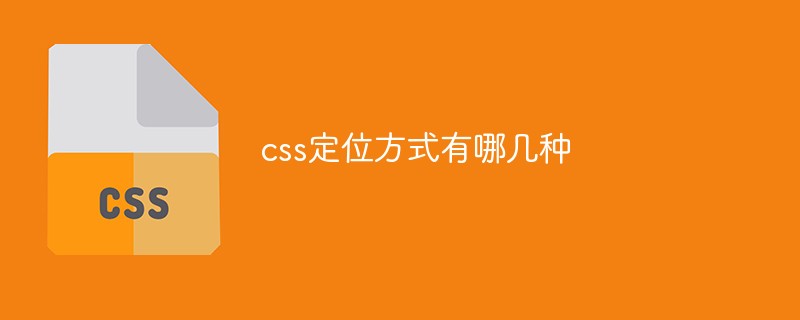
There are 5 types of css positioning methods: 1. Floating positioning (float). 2. static (static positioning); without positioning, the element appears in the normal flow. 3. Relative (relative positioning); the element is separated from the normal document flow. 4. Absolute (absolute positioning). 5. fixed (fixed positioning).

The operating environment of this tutorial: Windows 7 system, CSS3 version, Dell G3 computer.
Complex web page layout is realized through flexible positioning of various web page elements. The positioning of various elements in the web page has its own characteristics. Let’s take a look at several positioning methods of css.
This positioning method is very simple. You only need to specify a floating direction (such as: float:left; means this The element is placed to the left), and its positioning is relative to the parent element container;
If the element is set to float, the elements immediately behind it will be affected by the float, so the following elements need to be unaffected. , you need to clear the float later (clear: both; and other methods can be used). When two adjacent elements have the same float set, the two elements will be placed adjacent to each other in order. This positioning takes the element out of the document flow.
Position positioning is the positioning of a specified position. The following are the commonly used ones:
1. static (static positioning):
When we do not specify a positioning method, the default positioning method is static, which means it is automatically assigned to a suitable place according to the writing layout of the document. This positioning method uses margin to change the position, for left, top, z- Index and other setting values are invalid. This positioning does not break away from the document flow;
2. Relative positioning (relative positioning):
This positioning is a relative positioning, which can be set by setting left and top equal value, so that the specified element is offset relative to its normal position. This positioning does not break away from the document flow;
3. Absolute positioning (absolute positioning):
This positioning is done by setting top The offset values of , right, bottom, and left are positioned relative to the first parent element other than static positioning (this positioning is usually used in conjunction with setting the parent element to relative positioning). In the absence of a parent element, its The reference is the body, which is separated from the document flow;
4. Fixed (fixed positioning):
This positioning method is relative to the entire document. You only need to set it relative to each direction. The offset value can fix the element at a fixed position on the page. It is usually used to display some prompt information and break away from the document flow;
(Learning video sharing: css video tutorial)
The above is the detailed content of What are the css positioning methods?. For more information, please follow other related articles on the PHP Chinese website!